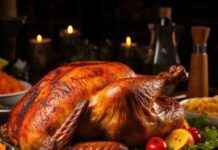The 1904 Pike Souvenir elongated penny, which was certified Mint State67 red and brown by Numismatic Guaranty Corp, is of interest to World’s Fair enthusiasts and elongated coin enthusiasts. The 1904 Indian Head cent is the host coin.
The cataloger says, “Obviously rolled, then put into careful storage, they exhibit substantial mint orange — that’s the correct way to describe color after one cent has been extended.” — the Indian design is clearly visible on the reverse. It still shows a lot orange color.
The Louisiana Purchase Exposition (also known as the St. Louis World’s Fair) was an international exposition that took place in St. Louis between April 30 and December 1, 1904. The “Pike” featured more than 50 amusements of the concession type, along with educational and scientific displays. There were also plenty of entertainment options.
Machines that could roll elongated coins were one of the most interesting attractions. The lot includes two other elongated coins from that period. It is estimated to retail for $3,500-$4,000 and comes from the Donald Drew collection.
Ray Dillard, an elongated coin specialist and roller wrote in the June 2002 supplement to American Numismatic Association’s publication The Numismatist “The King of Elongated coins’ is a fish!” Charles Damm issued it for humor reasons, explaining that the Midway at the fair was called the “Pike” (from turnpike); thus, the depiction on the elongated penny of a pickerel, a fish related the freshwater pike, was a play on words.
Dillard concluded that Damm’s unique style and talent (even the fish scales) was evident in Damm’s engraving. Although the exact quantity of this item is not known, the realized prices are a testament to its rarity.
Market commentary
Scotsman’s catalogs have a reputation for being open and honest about the coin market. This is evident in the description below of a 1921 S Indian Head 5-cent piece, MS-64 Error by NGC, that has an estimated value of $2,800-3,100.
“Back in the days when ANACS dominated certification markets… such a coin would have probably earned a straight grade followed by a ‘lamination disclaimer.” Today, however, such an alloy irregularity is called’mint error’ by NGC, which mistakenly reduces it to the reverse.
The 1921-S Indian Head 5-cent Coins are known for being struck on poorly prepared planchets, which often display irregularities similar to the subject coin. Scotsman points out that both sides have better strikes than the typical 1921 S, with the bison showing a bold, full-horn and significant detailing in his hide.
An NGC MS-64 “straight-graded” example of the issue sold for $3,360 at a 2019 Stack’s Bowers sale. It will be interesting to see what this “error,” however.
A 1795 Flowing Hair, 3 leaves silver dollar, Fine 12, graded Fine 12 in Professional Coin Grading Service (BB-27) is another interesting comment.
Scotsman wrote, “A case can also be made for ‘gradeflation” when one observes that the included ANACS certificate (dated 11/4/86) grade this coin VG-8/8.” This refers to early third-party grading in which each side would be graded separately.
The cataloger says that the type coin is a popular type. It costs between $2,800 and $3,400.








